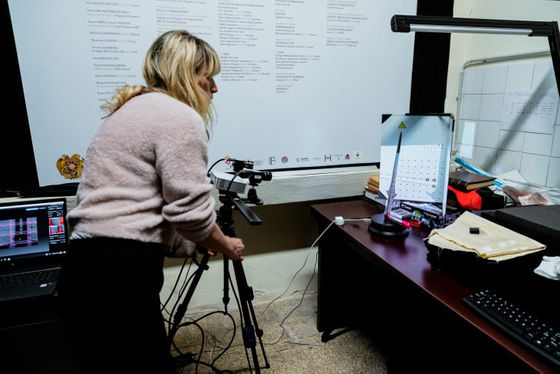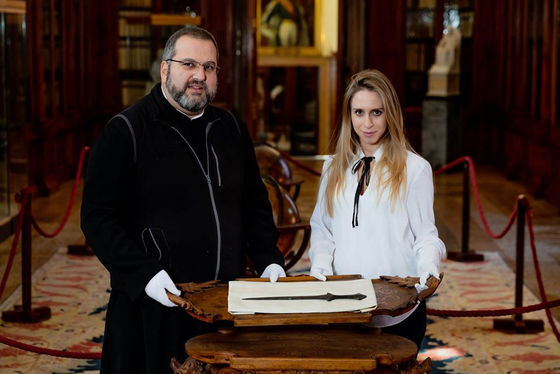It turns out that the world's oldest `` sword 5,000 years ago '' was normally displayed at the monastery

The sword in the medieval exhibition corner of the
5,000-year-old sword is discovered by an archeology student at a Venetian monastery-CNN Style
https://edition.cnn.com/style/article/5000-year-old-sword-discovered-in-italy-trnd/index.html
5000 year-old sword discovered in an Armenian Monastery in Venice
https://www.unive.it/pag/16584/?tx_news_pi1%5Bnews%5D=8707
The monastery was built on St. Lazarus, one of the islands in Venice, the city of waters, built by the Catholic monk Muchitar Sebastasi , born in Armenia , which was part of the Ottoman Empire at the time. The monastery is the center of Armenian culture and history research, which for the first time in human history has defined Christianity as the state religion.It has the first complete dictionary of Armenian and a copy of Armenian art, science, history and natural history. It is world-famous for its collections.

By
In addition to manuscripts, the monastery exhibited a number of artifacts related to Armenia. Vittoria Daralmerina, who studies the history of ancient Oriental swords at the University of Cafoscari in Venice, came to see such relics. He seemed to feel uncomfortable with the 'Medieval sword' on display. Below is the actual sword in question.

'When I saw the sword on display, I noticed it immediately,' said Dar Almerina. The sword in question had significant similarities to swords from around 3000 BC excavated from the
The sword in question was poorly preserved, and no visible decorations, inscriptions, or signs were found. Dar Almerina and the University of Padua conducted a chemical composition analysis of the sword in question. Analysis revealed that the sword was made of arsenic bronze , an alloy of arsenic and copper. Arsenic bronze is an alloy widely used from around 4000 BC to around 3000 BC before the appearance of bronze , and the sword found in the Arslantepe settlement archeological site and the Sivas region is also made of arsenic bronze, so the sword in question is BC It was determined to be 3000 years old.

To answer the question, 'How did this sword end up on St. Lazarus?' Dar al-Melina turned to Fr. Serafino Jamorian, who studies archives at the monastery. In a letter left by the monastery, Father Jamorian presented the sword of the problem to Father Gevon Alishan, who once belonged to the monastery in August or September 1886, when famous Ottoman architect Yervant Khorasandjian wrote. He found that. Father Alishan died at the monastery in 1901.
Further investigation revealed that Father Alishan was the principal of the Catholic Mukhtar Seminary in Paris in the late 1800s. From this result, Father Jamoulian speculated that 'Khorasandjian, a graduate of the school, gave Father Alishan the sword in question to show his gratitude.'
It is unknown how Khorasandjian obtained the sword, but Father Jamorian said that Khorasandjian was a prominent architect, saying, `` When working on an architectural project within the Ottoman Empire, the sword in question happened to happen. It may have been excavated. ' In the image below, Father Jamorian is on the left and Dar Almerina is on the right.

'The sword in question may be a ritual or a burial item buried in the event of death,' commented Professor Elena Rova of the University of Kafoscari, who served as an instructor to Dar Almerina. Professor Rova explained that in Almeria at the time, the number of aristocratic warriors was increasing, and therefore the sword was popular as a symbol of force and authority.
At the time of writing, the monastery was closed due to the spread of the new coronavirus epidemic.
Related Posts:
in Note, Posted by darkhorse_log







